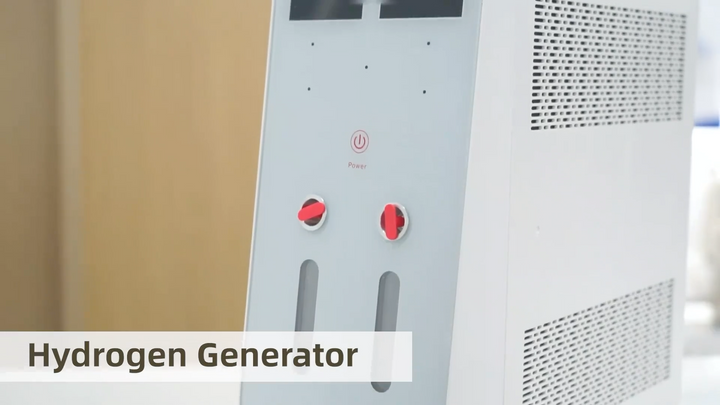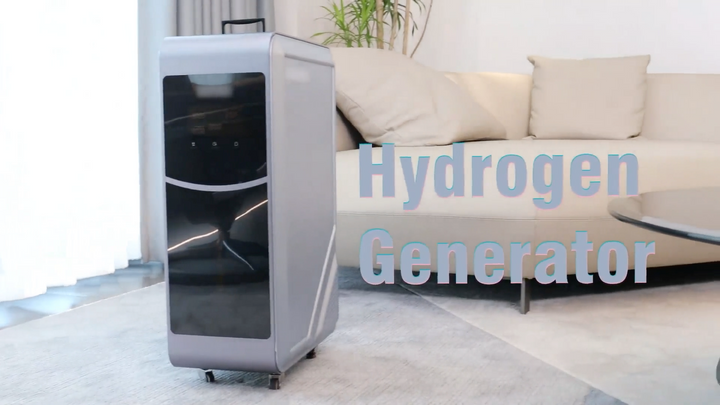There are three sex hormones that could be responsible for your acne: testosterone, progesterone, and estrogen.
There are three sex hormones that could be responsible for your acne: testosterone, progesterone, and estrogen.
If you ask most people what hormone causes cystic acne, they would probably say testosterone. This is because studies have shown that this hormone increases skin sebum production, leading to greater chances of breakouts. However, it’s not the only hormone with cyst-causing side effects!
Knowing what hormone causes cystic acne can help to identify if you’re dealing with estrogen dominance acne or if there is another cause of your cysts. So how can you tell if high estrogen is causing your breakouts?
Women are often told that the culprit for their hormonal acne is testosterone. However, that’s not always the case! The question “does high estrogen cause acne” can sound a bit silly given that the androgens like testosterone are always cited as the cause of hormonal breakouts, but it’s always worth exploring.
So, can too much estrogen cause acne?
The answer is yes.
Women are often told that the culprit for their hormonal acne is testosterone. However, that’s not always the case! The question
“does high estrogen cause acne” can sound a bit silly given that the androgens like testosterone are always cited as the cause of hormonal breakouts, but it’s always worth exploring.
So, can too much estrogen cause acne?
The answer is, yes.
It usually happens as part of a woman's natural menstrual cycle. Did you know that estrogen levels surge twice during a single cycle? That’s a lot of opportunities for breakouts to appear!
The first estrogen surge happens when women ovulate or release an egg. A secondary surge happens later in the cycle before this cycle ends, and a new one begins. Typically, this first surge is what’s responsible for pre-period breakouts.
However, if your body has elevated levels of estrogen, this could be the cause of your persistent hormonal acne. The body doesn’t get a chance to go through the natural hormonal ebbs and flows, causing lingering cystic acne.
Changes in hormone levels due to natural cycles or imbalances are equally as likely to cause breakouts. However, the difference between this is when these breakouts happen and how long they linger.
Because hormonal acne often appears as cysts, typical cystic acne removal methods can help! However, it’s important to remember that these are ideal for helping once acne is there - they don’t help to address the cause of the breakouts, estrogen dominance. Acne that’s hormonal in nature could appear due to hormone-disrupting chemicals in your environment, along with lifestyle choices that could make it hard for your body to balance your hormones.
When dealing with estrogen dominance acne, a holistic approach that includes rebalancing hormones can go a long way to reducing possible long-term damage to the skin. Here are some of the best tips to balance estrogen dominance and acne.
Improving your skin starts from within - avoiding foods that can make cystic acne worse, such as refined sugars, could make a difference in the severity of hormonal cysts. Eating plenty of fresh fruit and vegetables, good fats, and whole grains is an excellent start to keeping hormones balanced, possibly reducing the chances of hormonal acne.
Improving your skin starts from within - avoiding foods that can make cystic acne worse, such as refined sugars, could make a difference in the severity of hormonal cysts. Eating plenty of fresh fruit and vegetables, good fats, and whole grains is an excellent start to keeping hormones balanced, possibly reducing the chances of hormonal acne.
Stress can cause surges of another kind of hormone - cortisol - that leads to breakouts. It makes the skin produce even more sebum than usual and, alongside already-elevated estrogen levels, could be a recipe for stubborn, prolonged breakouts. Managing stress with mindfulness and yoga could help to keep hormones in harmony.
Stress can cause surges of another kind of hormone - cortisol - that leads to breakouts. It makes the skin produce even more sebum than usual and, alongside already-elevated estrogen levels, could be a recipe for stubborn, prolonged breakouts. Managing stress with mindfulness and yoga could help to keep hormones in harmony.
Sleep is incredibly underestimated for its effect on the skin and hormones. Sleep allows your body to reset - after all, our circadian rhythm relies on it to send out the correct hormones for your body to function! Sleep is the prime time your skin needs to heal from cystic acne - studies have demonstrated that lack of sleep is related to greater acne severity.
Sleep is incredibly underestimated for its effect on the skin and hormones. Sleep allows your body to reset - after all, our circadian rhythm relies on it to send out the correct hormones for your body to function! Sleep is the prime time your skin needs to heal from cystic acne - studies have demonstrated that lack of sleep is related to greater acne severity.
Minimizing exposure to hormone-disrupting chemicals could go a long way to reducing the severity of estrogen dominance acne. Many household products are sources of different hormone disruptors; taking a look for sources of these chemicals and removing them from your home may make a difference!
Minimizing exposure to hormone-disrupting chemicals could go a long way to reducing the severity of estrogen dominance acne. Many household products are sources of different hormone disruptors; taking a look for sources of these chemicals and removing them from your home may make a difference!
While there is no such thing as a magic pill for the skin, supplements such as molecular hydrogen may help give you the upper hand in balancing your hormones, too. Molecular hydrogen is a source of antioxidants, molecules that could help support your skin’s natural healing process, reducing breakouts. It also helps to keep your skin healthy and resilient, reducing the long-term effects of cysts on the skin.
There isn’t a magic age where all acne simply disappears. While you’re most likely to have breakouts during puberty due to wildly fluctuating hormones, it’s also possible for breakouts to continue well into adulthood. This is more common than you think!
Bacterial acne can appear as pustules and clogged pores anywhere on your face, especially where you’re more likely to touch it with dirty hands, a dirty phone, or even a dirty hat brim. Hormonal acne appears as deep cysts in your jawline and chin area.
For women, there are a few tell-tale signs that your breakouts are hormonal. Other than being in your chin and mouth area, hormonal acne tends to appear as deeper cysts that form under your skin. If you have acne that looks like bumps on your forehead, we can safely say that it’s probably not hormonal acne.
If you have deep, painful breakouts that appear like clockwork when you’re close to your period, you’re not alone! These itchy, uncomfortable pimples can become the bane of your existence every month. It almost feels like as soon as one heals, another pops up somewhere else. Ugh!
While they are pretty reliable indicators of being close to your period, why do they have to be so painful?
Well, we all know that the presence of breakouts usually has to do with hormones. The real trick is figuring out which one it could be - there are a few suspects which have been covered in this article!
If you have deep, painful breakouts that appear like clockwork when you’re close to your period, you’re not alone! These itchy, uncomfortable pimples can become the bane of your existence every month. It almost feels like as soon as one heals, another pops up somewhere else. Ugh!
While they are pretty reliable indicators of being close to your period, why do they have to be so painful?
Well, we all know that the presence of breakouts usually has to do with hormones. The real trick is figuring out which one it could be - there are a few suspects which have been covered in this article!

